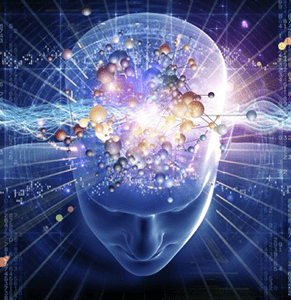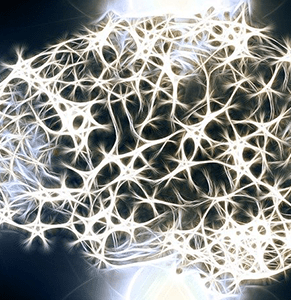Neurofeedback
Cutting-Edge, Scientific, Non-Invasive Brain Training
"Change your brain, change your life" Daniel Amen
“Neurofeedback should play a major therapeutic role in many difficult areas. In my opinion, if any medication had demonstrated such a wide spectrum of efficacy it would be universally accepted and widely used.”
Frank H. Duffy (2000, p.v), Professor and Pediatric Neurologist at Harvard Medical School
What is Neurofeedback?
Neurofeedback is a non-invasive method to re-train brain activity.
Mental or physical problems are often reflected in brain imbalances. Neurotherapy (e.g., neurofeedback) helps re-train the brain to function more effectively by providing positive reinforcement. Thus, it often resolves mental and physical disorders. Neurofeedback empowers our clients to overcome behaviors that stand in their own way.

The Wuttke Method
With over 40 years of experience working in and developing the field of Neurotherapy, Marty Wuttke developed the Wuttke Method as a neurotherapeutic approach to self-healing and human excellence. The Method provides guidance for a balanced and regulated lifestyle that includes meditation, healthy nutrition, hatha yoga and Qigong. Neurofeedback plays the foundational role in catalyzing the self-healing process for mind and body, leading to a more conscious and fulfilling life. We apply this powerful method by combining Neurofeedback with Sound Healing and Esoteric Acupressure.
Neurofeedback is a journey of self-discovery, personal growth, and unlocking the untapped potential within each of us. I wholeheartedly recommend"
Anonymous, Santa Barbara, CA, 2023
“I recently embarked on the journey of healing and personal growth through neurofeedback, and the experience has been nothing short of incredible. Neurofeedback has improved my life in ways I never thought possible, empowering me to tap into a newfound sense of clarity, focus, and well-being.
From the moment I began my neurofeedback sessions, I was met with a warm and welcoming environment, where Marty and Stella guided me through the process with expertise and compassion. Their deep understanding of the human brain and its complex workings gave me confidence in the effectiveness of this groundbreaking therapy.
Through a series of training sessions, I learned to diminish the power of my overactive amygdala and enhance my ability to focus. One of the most noticeable benefits I experienced was a significant reduction in stress and anxiety levels and the experience of feeling “triggered.” Neurofeedback allowed me to identify and address patterns of neural imbalance that were contributing to my feelings of overwhelm. By training my brain to achieve more balanced states, I discovered a newfound sense of calmness and resilience in the face of life’s challenges.
Another area where neurofeedback truly shone was in enhancing my focus and concentration. As someone who often struggled with distractions and a wandering mind, I was amazed at how this therapy honed my ability to sustain attention and stay on task. The clarity and mental agility I gained through neurofeedback have impacted all relationships in my life.
I must emphasize that neurofeedback is not an instant fix or a magic pill. It requires commitment, resources, and active attention outside of the training sessions, which includes meditation for me. However, the results are undeniably worth the effort. Neurofeedback is a journey of self-discovery, personal growth, and unlocking the untapped potential within each of us. I wholeheartedly recommend neurofeedback from IPI as a powerful resource for personal growth and change.”

Brainwaves: The Key to Change
At the root of all our thoughts, emotions and behaviors lay the intricate networks of communication composed of billions of neurons within our brains. Brainwaves are what we use to measure this communication activity. Brainwaves are tiny pulses of electrical activity that are produced when neurons communicate with each other. By targeting these electrical patterns, we can modify and improve the brain’s communication capacity.
When communication among neurons is impaired, corresponding problems will often be expressed in the body. For example, under stress people often experience negative effects such as a stomachache, headache, or heart palpitations. These symptoms are the result of specific communication patterns triggered in the brain, sometimes referred to as pathologically stable patterns. Such pathological patterns can arise from a variety of possible stressors, including physical or emotional abuse/trauma, chronic stress, anxiety, etc. As a response to a perceived threat, the brain has adopted a protective pattern based on past experience (it can be just a memory) or present trauma. The brain is simply doing the best it can to protect and enable one to deal with the real or unreal dangers and threats it perceives. A wide variety of problems and disorders can be traced back to this underlying defensive mechanism.

Benefits for Peak Performance
At the root of all our thoughts, emotions and behaviors lay the intricate networks of communication composed of billions of neurons within our brains. Brainwaves are what we use to measure this communication activity. Brainwaves are tiny pulses of electrical activity that are produced when neurons communicate with each other. By targeting these electrical patterns, we can modify and improve the brain’s communication capacity.
Peak performance
Creativity
Meditation
Cognitive efficiency
Attention and focus
Spiritual Growth
Emotional balance
Sleep patterns

Clinical Application
Neurofeedback is used to safely and effectively reduce symptoms associated with many common ailments.
- Addiction
- Anxiety – Disorders: 30% of the US population suffer from an anxiety disorder in the course of their lifetime. After the past few years, this seems to have increased dramatically. From a very real threat and uncertainty, anxiety disorders got triggered on a clinical and subclinical level. This means that the neural network processing potential threats got out of control and has become overactive. With neurofeedback, a neuroscientific and non-invasive method, the brain can be retrained and calm the overactive anxiety processing networks. Neuroscientific studies show that 80-90 % of the participants experience relief from their symptoms. Read more …
- Attachment Disorder
- Attention Deficit Disorder (ADD)
- Attention Hyperactivity Disorder (ADHD)
- Autism spectrum disorder (ASD)
- Autoimmune Dysfunction
- Chronic Fatigue (CFS)
- Chronic Pain
- Cognitive Decline
- Conduct Disorder
- Depression
- Eating Disorders
- Learning Disabilities
- Seizures (certain types)
- Sleep disorders/problems
- Stroke
- Traumatic Brain Injury (TBI)
- Obsessive-Compulsive Behavior (OCD) (see Anxiety Disorders above or read more here)
- Post-Traumatic Stress Syndrome (PTSD) (see Anxiety Disorders above or read more here)

Technical Specifications on our approach
We use Neurofeedback, Sound Healing, Esoteric Acupressure, Meditation, Yogic Philosophy, and Neuroscience in a holistic approach to health and well-being.
- 19 channel LORETA z-score EEG neurofeedback
- Biofeedback muscle tension (EMG), heart rate (e.g., HRV), skin temperature (GSR)
- Low-intensity pulsed electromagnetic (pEMF) stimulation
We work with interested clients to develop positive lifestyle choices that will enhance the benefits of Neurotherapy, such as healthy nutrition, meditation, hatha yoga, or qigong.

How it works
Neurofeedback is a science-based, non-invasive technique that involves measuring and analyzing brain activity to determine how efficiently it is functioning. Knowing which suboptimal routines a brain exhibits, allows to train the brain to self-regulate for a better overall performance.
Neurofeedback trains the brain to regulate bodily functions and mental processes. Many cognitive, emotional, or physical issues can be traced back to a suboptimal functioning brain. Training your brain to improve its function can help it take better care of you, just like physical exercise can improve your physical health. We can usually determine that the brain is not functioning well using a qEEG (quantitative electroencephalogram). Restoring function to the brain using neurofeedback can alleviate a large variety of physical and emotional problems. Sleep patterns can improve, allowing increased alertness during the day. Neurofeedback can reduce anxiety and depression as well as syndromes such as migraines or chronic pain. Hyperactivity, attention deficit, post-traumatic stress, and emotional instability are also frequently visible as abnormalities in the EEG and can be addressed using neurofeedback.
Neurofeedback treatment can also help with certain syndromes and issues, including traumatic brain injury, seizures, autism, and stroke. In these instances, the training may not eliminate the problem or disorder itself but rather assists the brain to function optimally despite the injury.
One of the technique’s great strengths is that it draws upon the brain’s ability to learn and adapt. Neurofeedback therapy is non-invasive, and rather than trying to affect the body from the outside, it helps the brain deal with any problems at the foundation. Neurofeedback therapy simply makes certain characteristics of the brain’s operation visible to the conscious mind.
Neurofeedback training can help both children and adults. In fact, thanks to the innate flexibility of a growing child’s mind, neurofeedback is especially effective for children. Hyperactivity, attention deficit, temper tantrums, and conduct problems are more often exhibited by children than by adults and can be effectively treated. Furthermore, once the brain has learned to function normally, the effect is usually lasting, and relapse rarely occurs. Through positive reinforcement (operant conditioning), the brain becomes balanced, its neural pathways are altered, and its activity optimized.
Because neurofeedback therapy trains the brain to operate effectively, its applications are not limited to recovering from injury or coping with problems. Neurofeedback training is also valuable to bring the brain back on track after day-to-day stress, or to facilitate peak performance, for example, for professional athletes or corporate executives. People practicing meditation also report an enhanced ability to quiet racing thoughts and deeper, more profound, meditation experiences.

More about Brain Waves
Brain waves are the oscillations of electrical energy produced by the brain. This electrical activity is hypothesized to emerge from vast aggregates of neurons as they communicate and process information. The source of this activity is the postsynaptic changes in electrical potential along the membrane of the neural dendrites.
Different brain wave frequencies, called bandwidths, relate to different mental states. They are named after letters of the Greek alphabet. Neurofeedback therapy is used to reduce or increase specific brainwave frequencies depending on the problem.
Delta is the slowest frequency of brain wave activity, measuring .5 to about 4 cycles per second (Hertz, hz). Frequency is a measurement of the oscillations, or the cycles per second, of the brain waves. Delta is seen in the adult EEG in the deep sleep state that occurs mostly at the beginning of the sleep cycle. If it is seen in the waking state of an adult, it could possibly indicate some type of suboptimal routine.
The next brainwave bandwidth is Theta. Theta occurs between 4 and 8 cycles per second. Theta in the adult EEG can indicate drowsiness or certain abnormalities. Sometimes people with head injuries will show excessive Theta activity either at the sight of the injury or in other areas of the brain. Theta has also been found to be outside the normal range in some children exhibiting ADD, ADHD, and learning disabilities. Theta can also be associated with hypnogogic states and used therapeutically for directed creative visualization. The presence of theta frequencies can also allow normally repressed or subconscious information to come to the conscious mind for integration.
The next bandwidth is Alpha. The mental state of Alpha is similar to putting the clutch in before shifting the gears; it is sort of a holding pattern. Approximately ninety-five percent of the population has a peak Alpha frequency with eyes closed, which is considered normal. Alpha predominance essentially represents a brain that is quiet and at rest. An important point is that Alpha ranges from 8 to 12 cycles per second. Some research shows a difference in the mental activity of 8 cycles per second Alpha versus 12 cycles per second Alpha. In other words, you might have more focused thinking at 12 cycles per second Alpha than at 8 cycles per second. We are finding that the bandwidths are very broad and are used to identify the morphology, that is, the shape of the waves. Specific frequencies within those bandwidths may correlate with slightly different mental activity.
Beta is anywhere from 13 cycles per second to over 32 cycles per second. Low-frequency Beta, between 13 and 15 cycles per second, is often referred to as “sensory motor rhythm” and seems to be a very important rhythm for reorganizing basic functions of the brain. It is being used for ADD and learning disabilities, as well as a variety of emotional problems, and for peak performance models. Low-frequency Beta waves are associated with the coordination of many areas of the brain. By teaching an area of the brain to make more low frequency Beta activity, it affects many pathways within the brain in many different ways. We focus on this frequency often for sleep disorders. From 15 hz on up, we speed up in frequency so the brain becomes more focused, more concentrated … up to about 20 hz. From 20 hertz on, too much Beta activity can be associated with too much activity and electrical noise occurring in the brain. Functioning, organizational, and concentration abilities start to deteriorate from about 20 hertz and up. However, some researchers are studying higher frequencies of Beta. They hypothesize that there is a correlation between these very high frequencies and advanced levels of meditation where the meditator experiences a dramatic shift in consciousness.
